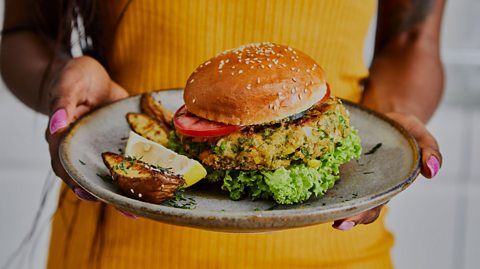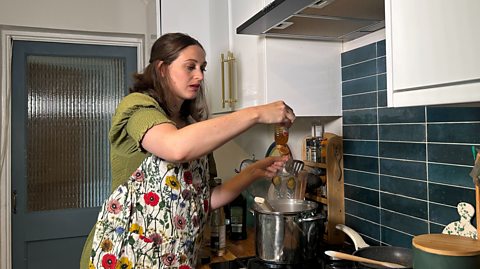There are a number of reasons why someone may choose not to eat meat. From health reasons to environmental concerns, more and more people have adopted a plant-based diet and, according to Statista, there are over five million vegans and vegetarians in the UK as of 2024.
It may seem then that plant-based alternatives - meaning foods which are used to substitute meat and dairy products - are a modern phenomenon. But vegan and vegetarian diets have been chosen by humans across the world for centuries and their roots can be traced back to ancient civilisations. Join ҙуПуҙ«ГҪ Bitesize as we take a trip back through the ages to explore the origin of meat-free substitutes.

What were the first plant-based alternatives?
Tracing back the history of meat-free diets is tricky, but it is largely accepted that the earliest examples of plant-based alternatives, such as seitan and tempeh, were produced and consumed in East and South East Asia.
One of the first known alternatives is tofu, also known as bean curd, which is thought to date back around 2,000 years. The popular soya-derived food is believed to have been developed in China during the Han dynasty between 206 BC and 220 AD.
Its arrival as a meat substitute also coincided with the beginning of Buddhism in China, which scholars believe was introduced by monks and merchants from India.
While early Buddhism didnвҖҷt explicitly prohibit meat-eating, abstention from it soon became common in Chinese monasteries. This was particularly true when Emperor Wu of the Liang Dynasty ruled China during the 6th Century. As a devout Buddhist, he mandated vegetarianism for Chinese Buddhist monks and nuns across the country.
While there wasnвҖҷt any obligation to replicate classic meat-based dishes, Chinese Buddhist monks are credited with creating some of the first alternative recipes. Despite living on a simple diet, they were known to entertain pilgrims and patrons by cooking meals which replaced meat and fish with vegetables.
Others, though, had no choice but to adhere to a tofu or gluten-rich diet. Some less-affluent households turned to substitutes when they could not afford the real thing.
Vegetarianism continued to flourish during the Tang (618 AD - 907 AD) and Song dynasties (960 AD вҖ“ 1279 AD). Records from the Tang period document how a Chinese official hosted a banquet serving imitations of pork and mutton dishes made from vegetables.
Diners in the Song dynasty had a diverse range of meat-free restaurants. Not only did these restaurants offer vegetarian temple food, they also served imitations of foods such as soft-shelled turtle, pufferfish and roasted venison.

When did plant-based alternatives begin in the UK?
Plant-based alternatives didnвҖҷt exist in the UK until much later. One of the earliest pioneers of vegetarianism was George Cheyne (1672 - 1743), a Scottish physician who owned practices in London and Bath. After deciding to transform his eating-habits, he adopted what was known as a вҖҳvegetable dietвҖҷ, which he concluded improved his health and mood. But it wasnвҖҷt until the 1840s that the word вҖҳvegetarianвҖҷ was coined.
In the late 19th Century the veggie burger and other nut-based foods branded as meat became available to the Victorian public. This was made possible when wholesalers, such as the London Nut Food Company, began to supply items to health food shops in the capital.
Meanwhile, in Birmingham, a nut and grain based product called Protose became available to purchase. The self-described вҖҳvegetable meatвҖҷ was created by the American physician and nutritionist John Harvey Kellogg (1852 вҖ“ 1943). Also known for inventing corn flakes, granola and raw peanut butter, Protose was just one of the meat-free products developed and marketed by Kellogg during his lifetime.
Vegetarian alternatives were later encouraged in the UK as part of wartime efforts to eat less meat or enforced through rationing.
This led to the consumption of some meat-free options to become more widespread. Woolton pie, a pastry dish made from vegetables and mashed potato was widely served when shortages made other foods hard to prepare. The Welsh Glamorgan sausage, a food made from cheese, leeks and bread crumbs, also became a popular item in World War Two.
This article was published in October 2024
Looking for quizzes, amazing stories and fun facts?
Bitesize Topical has it all!

Fancy making this 2,000 year old recipe?
Need some cooking inspiration? Why not try making this 2,000 year old recipe

Six new inventions that could change the world
Supercomputers that could fight disease and a whole new way of carrying your shopping

Four rare smells from around the world - and beyond
ҙуПуҙ«ГҪ Bitesize looks at four seldom-found smells from across the world.
